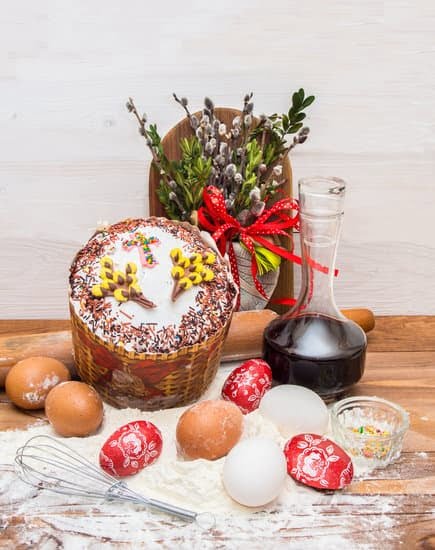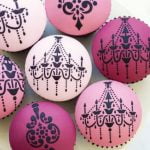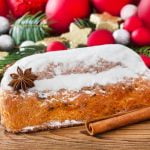A cake decorator is a skilled professional who specializes in creating visually stunning and delicious cakes. This intricate art form requires precision, creativity, and a keen eye for detail. One crucial aspect of cake decorating is the technique of rolling a piece, which plays a significant role in achieving beautiful and unique designs.
Rolling a piece, whether it be fondant or gum paste, is an essential skill for cake decorators. It allows them to create intricate decorations, cover cakes with a smooth fondant layer, and add dimension and texture to their designs. The process of rolling a piece requires patience, practice, and the right tools to achieve a flawless finish.
In this article, we will explore the art of rolling a piece in cake decorating, from providing a step-by-step guide on how to roll fondant or gum paste to discussing the essential tools needed for this technique.
We will also delve into different cake decorating techniques that involve rolling a piece, troubleshoot common problems that may arise during the process, showcase creative ideas and stunning designs for inspiration, and even discuss advanced methods and expert tips for achieving professional-looking cake designs.
Whether you’re new to cake decorating or looking to enhance your skills, mastering the art of rolling a piece is crucial for creating showstopping cakes.
The Art of Rolling a Piece
Cake decorating is a form of art that involves creating visually appealing designs and decorations on cakes. One essential skill for cake decorators is the ability to roll fondant or gum paste to create various decorative elements. The process of rolling a piece is crucial in achieving a smooth and even finish, whether it’s covering a cake with fondant or creating intricate details such as flowers, ribbons, or textures.
To achieve a successful result when rolling fondant or gum paste for cake decoration, follow this step-by-step guide:
1. Prepare the work surface: Before rolling out the fondant or gum paste, ensure that the work surface is clean and lightly dusted with cornstarch or powdered sugar to prevent sticking.
2. Knead the fondant or gum paste: Start by kneading the fondant or gum paste until it becomes pliable and smooth. This step helps to warm up the material and make it easier to roll out.
3. Roll out the material: Place the fondant or gum paste on the prepared work surface and use a rolling pin to gradually flatten it into an even thickness. Roll in one direction, then turn the material 90 degrees and continue rolling to maintain an evenly rolled piece.
4. Lift and adjust: Periodically lift and rotate the material as you roll to ensure an even thickness throughout. This will help prevent uneven stretching or tearing of the material.
Tips for achieving a smooth and even roll:
– Use a non-stick silicone mat to provide a smooth surface for rolling out fondant or gum paste.
– Avoid over-flouring or over-cornstarching the work surface, as excessive dryness can affect the texture of the material.
– If air bubbles occur during rolling, use a small pin to gently puncture them and smooth out any wrinkles.
By following these steps and tips, cake decorators can achieve a perfectly rolled piece of fondant or gum paste for their creative designs.
Choosing the Right Tools
When it comes to rolling a piece in cake decorating, having the right tools is essential for achieving professional and flawless results. Here are the essential tools needed for rolling a piece in cake decorating:
- Rolling Pin: A good quality rolling pin is crucial for achieving an even and smooth roll of fondant or gum paste. It is recommended to have both a standard-sized rolling pin for larger pieces, as well as a small pin for intricate designs or details.
- Mat: A non-stick silicone mat or a pastry mat with measurements is ideal for rolling out fondant or gum paste. The measuring guides on the mat help ensure that the rolled piece is consistent in thickness and size, which is important for uniform cake decoration.
- Measuring Tools: Accurate measurements are key in cake decorating, especially when rolling out fondant or gum paste. Measuring tools such as rulers, fondant smoothers, and spacers assist in achieving the desired thickness and dimensions for the rolled piece.
In addition to these essential tools, other helpful accessories can include a fondant smoother for flattening the rolled piece, cornstarch or powdered sugar for dusting surfaces to prevent sticking, and parchment paper for transferring delicate designs onto cakes.
Having the right tools not only makes the process of rolling a piece more efficient but also contributes to the overall success of cake decorating projects. With these essential tools at hand, cake decorators can ensure that their rolled pieces are uniform, smooth, and visually appealing.
Types of Decoration
One of the most popular uses for rolled pieces in cake decorating is creating intricate fondant flowers. To begin, roll out a small piece of fondant or gum paste to the desired thickness. Use floral shaping tools to cut and shape the petals, then layer them together to form a flower. This technique allows for endless creativity, as decorators can experiment with different petal shapes, colors, and arrangements to achieve various floral designs.
Fashioning ribbons and bows:
Another elegant way to incorporate rolled pieces into cake decoration is by crafting fondant ribbons and bows. To achieve smooth and evenly shaped ribbons, roll out a thin strip of fondant or gum paste using a non-stick rolling pin on a flat surface.
Once the desired length and width is achieved, create folds and loops to mimic the appearance of fabric ribbons. These can be used to adorn cakes for weddings, birthdays, or other special occasions, adding a touch of sophistication.
Covering cakes with a smooth fondant layer:
Rolling out fondant to cover an entire cake is a fundamental skill in cake decorating. Start by preparing the surface of the cake with a thin layer of buttercream frosting as an adhesive. Then, roll out a larger piece of fondant to approximately 1/8 inch thick by using a rolling pin on a powdered sugar-dusted work surface.
Carefully lift the rolled fondant onto the cake and gently smooth it over the top and sides using your hands or a smoothening tool. This technique provides a flawless canvas for further decorative embellishments such as piping or painting.
These different techniques showcase the versatility of using rolled pieces in cake decorating, offering endless possibilities for creating stunning and personalized designs. Whether it’s delicate flowers, stylish ribbons, or seamless fondant coverings, mastering the art of rolling pieces opens up boundless opportunities for imaginative and professional cake decorations.
The use of rolled pieces in cake decorating adds dimension, texture, and artistic flair to every creation – from simple yet elegant designs to elaborate and visually captivating masterpieces.
Troubleshooting
Rolling a piece of fondant or gum paste is an essential skill for cake decorators, as it is often used to create a smooth covering for cakes, intricate decorations, and ornate designs. However, this technique can present some challenges that may affect the overall outcome of the cake decoration. One common problem when rolling a piece is air bubbles forming within the fondant or gum paste, which can create unsightly bumps and imperfections on the cake.
To prevent this issue, it is important to knead the fondant or gum paste thoroughly before rolling it out to remove any air pockets. Additionally, gently smoothing the rolled piece with a fondant smoother can help eliminate any remaining air bubbles.
Another common challenge in rolling a piece for cake decoration is achieving an even thickness throughout the fondant or gum paste. Without consistency in thickness, the final design may appear lopsided or uneven. To address this issue, using spacers that attach to either side of your rolling pin can help ensure an even thickness as you roll out the fondant or gum paste. Additionally, guiding your hands and applying gentle pressure while rolling can help maintain uniformity in thickness.
When working with colored fondant or gum paste, another challenge arises – color transfer. This occurs when vibrant colors seep onto lighter shades during the rolling process. A solution to this problem is using cornstarch or powdered sugar on your work surface to prevent sticking, rather than using colored icing sugar which could lead to color transfer. Furthermore, chilling your colored fondant before use may help reduce potential color bleeding during the rolling process.
Overall, understanding how to troubleshoot common problems and challenges when rolling a piece for cake decoration is imperative for achieving professional-looking results.
| Common Problem | Solution |
|---|---|
| Air Bubbles | Knead thoroughly and use a fondant smoother |
| Uneven Thickness | Use spacers and apply pressure evenly while rolling |
| Color Transfer | Use cornstarch/powdered sugar on work surface and chill colored fondant |
Inspiration and Ideas
Cake decorating offers endless possibilities for creativity and innovation, especially when it comes to using rolled pieces to enhance the design of a cake. From intricate fondant flowers to elegant ribbons and patterns, the use of rolled pieces can elevate a simple cake into a stunning work of art. In this section, we will explore some inspiring ideas and examples of how rolled pieces can be used in cake decorating to create beautiful and unique designs.
Fanciful Fondant Flowers
One popular way to use rolled pieces in cake decorating is by creating fondant flowers. These delicate blossoms can be made by rolling out thinly colored fondant, cutting out petal shapes, and carefully assembling them to form lifelike flowers.
Whether it’s a single statement bloom or an entire bouquet adorning the cake, fondant flowers add a touch of elegance and charm to any design. For example, creating a cascading arrangement of pastel-colored roses on a wedding cake can instantly transform it into a romantic masterpiece.
Striking Geometric Patterns
Another creative use of rolled pieces in cake decorating is the incorporation of geometric patterns. By rolling out fondant or gum paste into thin strips or sheets and arranging them in intricate patterns, decorators can achieve modern and eye-catching designs on cakes. From bold stripes and chevron motifs to sophisticated lattice work, the possibilities are limitless. One stunning example is a meticulously designed Art Deco-inspired cake with geometric fondant patterns that evoke the elegance of the Roaring Twenties.
Whimsical 3D Sculptures
Rolled pieces can also be utilized to create whimsical 3D sculptures that bring cakes to life. Whether it’s crafting adorable animals, playful characters, or realistic objects from fondant or gum paste, the addition of sculpted elements adds an element of surprise and wonder to any cake design.
Imagine a birthday cake with an edible fondant sculpture of a beloved cartoon character or a fairy-tale scene complete with fairies and unicorns-all brought to life through skillful rolling and shaping techniques.
By showcasing these creative uses of rolled pieces in cake decorating along with examples of stunning designs and finished cakes, decorators can draw inspiration from different techniques and elevate their own creations to new heights. The key lies in experimenting with various shapes, colors, textures, and themes to push boundaries and unleash imagination while delighting clients with visually captivating confections.
Advanced Techniques
When it comes to advanced techniques in cake decorating, the art of rolling a piece takes on new levels of creativity and skill. One advanced method that has gained popularity in recent years is marbling fondant. Marbling involves blending different colors of fondant together to create a stunning and unique pattern that can be used to cover an entire cake or for creating decorative elements such as flowers or accents.
To marble fondant, start by selecting two or more colors that complement each other. Roll each color into long, thin ropes and then twist them together to create a marbled effect. The key is to blend the colors just enough to achieve the desired look without overmixing and muddying the design. Once the marbled fondant is rolled out and applied to the cake, it creates a beautiful and eye-catching finish that adds an elegant touch to any confection.
Another advanced method for rolling a piece in cake decoration is creating textures using fondant or gum paste. This technique allows decorators to add intricate designs and patterns to their creations, elevating the overall aesthetic of the finished product.
Texture mats, embossing tools, and specialty rolling pins are essential for this process as they help imprint delicate details onto the rolled fondant or gum paste. Whether it’s mimicking lace, floral motifs, or geometric patterns, adding texture through rolling creates visual interest and dimension in cake decorating.
Using multiple colors in a single roll is yet another advanced technique that adds depth and vibrancy to cake decorations. By combining different hues of fondant or gum paste seamlessly during the rolling process, decorators can achieve striking effects such as ombre gradients, bold contrasts, or artistic blends.
This advanced method requires precision and expertise in handling multiple colors simultaneously while ensuring they merge fluidly without smudging or mixing too much. The result is visually captivating designs that showcase mastery in the craft of rolling a piece for cake decoration.
| Advanced Technique | Description |
|---|---|
| Marbling Fondant | Create stunning patterns by blending different colored fondants |
| Creating Textures | Add intricate designs using texture mats, embossing tools |
| Using Multiple Colors | Elevate designs by seamlessly blending multiple colors during rolling process |
Expert Tips and Tricks
In the world of cake decorating, the ability to roll a piece with precision and skill is an essential technique that can elevate a cake from ordinary to extraordinary. Whether creating fondant flowers, ribbons, or a smooth fondant layer, mastering the art of rolling is key to achieving professional-looking cake designs. Through this comprehensive guide and step-by-step instructions, you can learn valuable insights and expert tips from seasoned cake decorators who have honed their craft to perfection.
One of the most important aspects of rolling a piece for cake decoration is using the right tools. A good quality rolling pin, a non-stick mat, and accurate measuring tools are indispensable for achieving precise and even rolls of fondant or gum paste. Additionally, understanding the different types of decoration that involve rolling a piece – such as creating intricate fondant designs or covering cakes with smooth fondant layers – expands the possibilities for creativity in cake decorating.
As you embark on your journey to master the art of rolling a piece in cake decoration, it’s crucial to be aware of potential challenges that may arise. From ensuring an even thickness to preventing air bubbles or cracks in rolled fondant, troubleshooting these issues with practical solutions will help you achieve a flawless finish.
Remember that practice makes perfect, and don’t be afraid to experiment with advanced techniques such as marbling fondant or using multiple colors in a single roll to further enhance your cake designs. With dedication and perseverance, you can transform simple pieces of fondant into stunning works of edible art that will delight and impress anyone who sets eyes on your beautifully decorated cakes.

Welcome to our cake decorating blog! My name is Destiny Flores, and I am the proud owner of a cake decorating business named Cake Karma. Our mission is to provide delicious, beautiful cakes for all occasions. We specialize in creating custom cakes that are tailored specifically to each customer’s individual needs and tastes.





